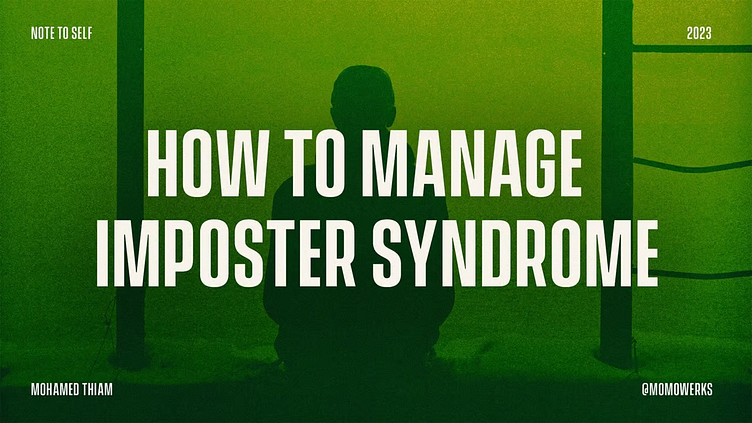How to Manage Imposter Syndrome
Hidden within your self-doubt is a secret roadmap to your best designer self. With its persistent whispers of not being enough, imposter syndrome can debilitate designers, paralyzing creativity and hindering progress.
This silent adversary has a knack for turning excitement into apprehension. It traps you in an endless cycle of doubt, causing a loss of professional direction and eroding your self-confidence. Not addressing it can lead to:
Project Paralysis: From anticipation to dread, it transforms opportunities into formidable adversaries.
Endless Doubt: It creates a relentless cycle of uncertainty that blocks progression.
Directionless Drift: It blurs clarity, creating hesitation at every step.
Self-Belittlement: It injects a constant narrative of self-depreciation and doubt.
Blocked Potentials: It places invisible barriers between your skills and you, hindering you from operating at full capacity.
But what if, amidst its deceptive challenges, it conceals an unexplored avenue toward self-enhancement and mastery? With a mindset change, you can flip the script and reveal the hidden potential within these challenges.
The very elements of imposter syndrome that seem detrimental can become catalysts for growth, progression, and even mastery.
Keep Growing: Turn your doubts into chances to learn and get better. You’ll empower yourself each step of the way.
Small Victories: Catalogue every win to boost your confidence and nurture a positive mindset.
Take on Challenges: Use tough problems to hone your skills and build resilience for when things get tough.
Get Comfortable with the Uncomfortable: Nurture a beginner’s mindset and never stop learning. Your curiosity will sharpen your problem-solving skills.
Community and Support: Leveraging peer and mentor insights for collective and individual growth. It’ll also teach you to be kinder to yourself.
By reshaping self-doubt and harnessing its hidden messages, we unlock a toolset for transformation and growth in our design journey. This means using worry to make our work better, not letting it stop us in our tracks. It means turning each challenge into a stepping stone to improve, not as a roadblock. This approach doesn't just make our designs better; it makes us better designers.
So remember, anytime you doubt yourself, let it be a reminder to keep going, trying, and creating. Because every design you make doesn't just show your skill, it shows your journey, efforts, and growth. And who knows, your story of turning doubt into something beautiful might just inspire someone else to try the same.
NOTE TO SELF
Embrace discomfort for growth.
Choose self-affirmation over self-doubt.
View challenges as valuable learning moments.
Prioritize learning—it's your weapon.
Catalogue every victory for future reference.
Engage with mentors and communities for guidance.
Share your story to practice vulnerability.
Practice fast self-forgiveness—it's indispensable.
Peace and Love. ✌️❤️
📖 Enjoyed today's writing? Share it with a friend who'll love it too.
📸 Not stalking me on Instagram yet? Let's fix that.
💌 What resonated with you? Drop a comment—I read all your messages.
